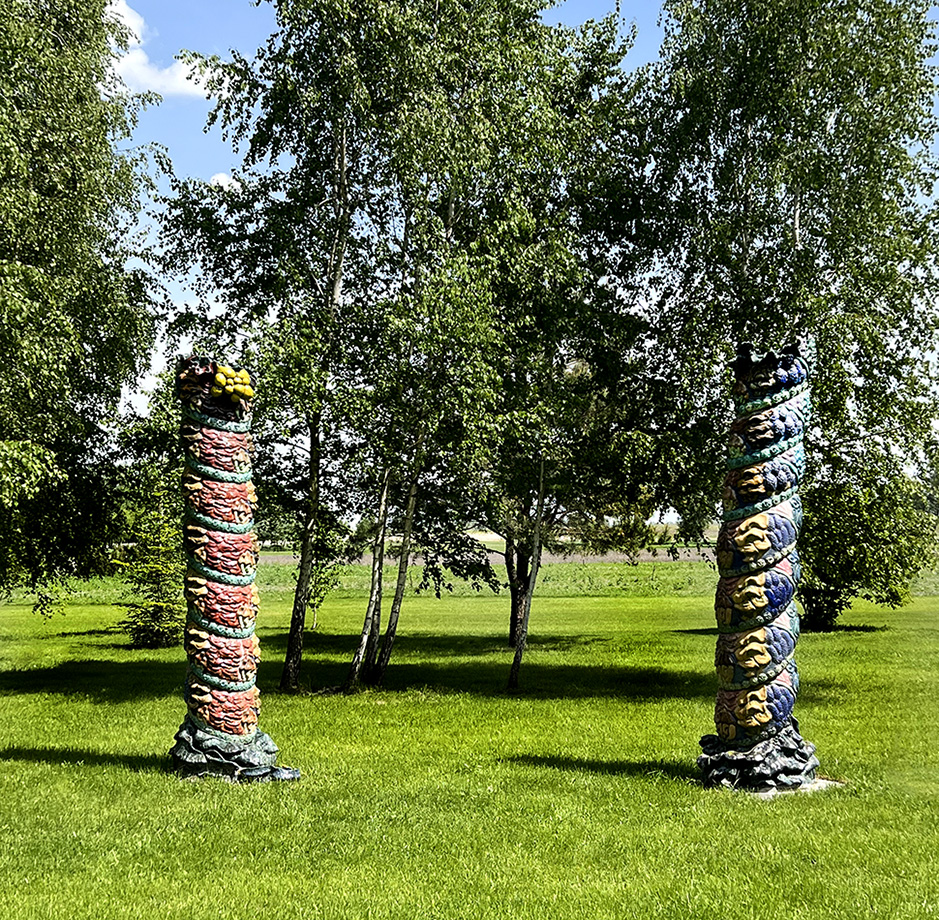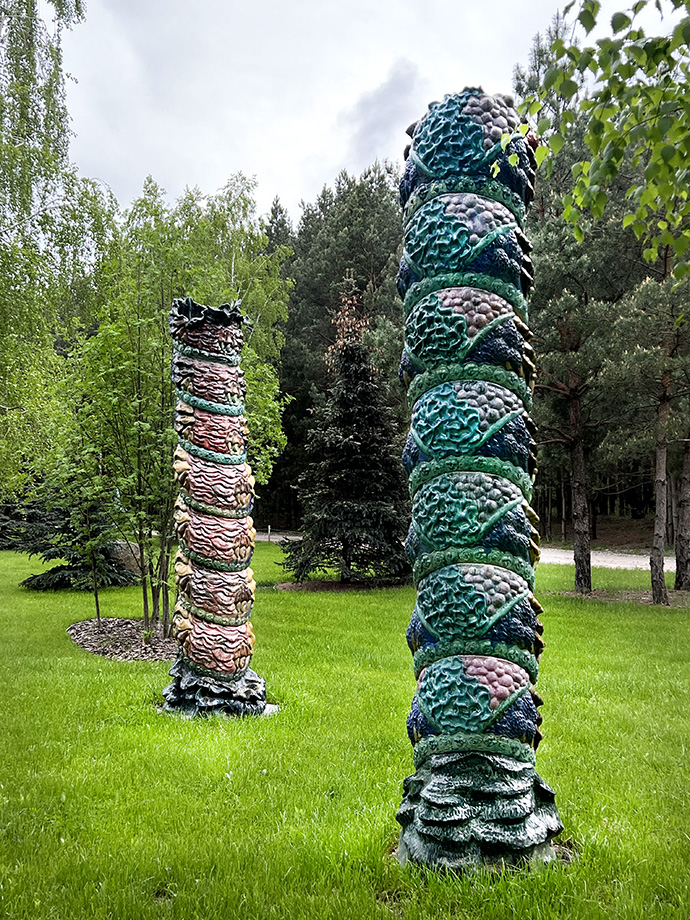Ksenia Hnylytska. Pier Micheli’s Dream or a Monument to the Victory of Saprobionts

Ksenia Hnylytska’s primary media are painting, video and graphic art. Nature and environmental issues, alongside with social issues, occupy a prominent position among the artist’s themes, as can be seen from her numerous painterly Open Airs and forest landscapes. Hnylytska’s new project, Pier Micheli’s Dream, or a Monument to the Victory of Saprobionts, has a deeply painterly sensibility too. Despite that, the work opens a wholly new page in the artist’s practice: this installation of module ceramic columns was both a creative challenge and a space for experiments. With this project, Hnylytska moves on from paintings and videos to the liminal zone between sculpture, architecture and applied arts.
Pier Micheli’s Dream is a speculative fantasy about the Earth’s post-apocalyptic and posthumanist future. It consists of ceramic columns covered in gaudy ornaments of saprobionts (mostly mushrooms) that shimmer with iridescent glazing. The title refers to the biologist Pier Micheli, known as the father of cryptogamy due to his ground-breaking studies in mycology (he was the first to discover that mushrooms reproduce by spores). Having developed an interest in the theme, Hnylytska checked out the holdings of the Vernadsky National Library of Ukraine. She discovered that the mycology shelf has not been perused since 1986 and decided to restore historical justice. She creates a panorama of ruins of man-made architectural structures that were supposed to serve as monuments to the greatness of civilization but ended up becoming monuments to the greatness of nature. When developing these objects, the artist was inspired by the Manuelino aesthetics of the late Portuguese Gothic and by the Stalinist classicism.

A column is symbolic, decorative and utilitarian at the same time. Hnylytska’s ceramic columns are both monumental and bathos-laden, but they are made of the material that is usually used for smaller objects or in decorative and applied arts. The work became an interesting technological experiment for the artist: working in a new medium that has to be fired in a kiln carried an element of surprise. Handmade ceramic objects underscore the vulnerability of humankind and of the anthropocentric model of the world as such, presenting an example of ecological art that eschews polymers and other synthetic materials. The scholar Donna Haraway suggests that the term “posthuman” should be interpreted through the lens of the word “humus”: “We are compost, not posthuman.” Similarly, what remains of human works becomes foundations or humus for a global mycelium, and Hnylytska creates its “portrait” by shifting the focus from humankind to non-human agents. Hnylytska’s installation is decorative art of the posthumanist world highlighting the beauty of the non-human, speculative art created by non-humans for non-humans, an ecological fantasy. It is also a meditation on hierarchy. Columns as monuments to greatness and domination are juxtaposed to mushrooms with their rhizomatic structure and mycelium’s collective intelligence. Horizontal ties replace vertical anthropocentric hierarchies of subjugation.
Natalia Matsenko




